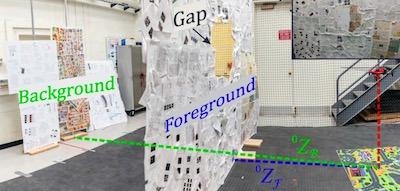Sat, Sep 15, 2018
University Of Maryland Scientists Working On Project GapFlyt
Researchers at the University of Maryland are teaching drones to employ techniques used by birds and insects to fly through narrow gaps at high speeds. The drone, a Bebop 2 drone with an NVIDIA Jetson TX2 GPU on board, has been able to fly through a small hole at about 6 feet per second with about an 85 percent success rate.

The program is called GapFlyt by the UM researchers. TechCrunch reports that the drone utilizes a monocular camera that allows the aircraft to develop a 3D model of a surface from a series of photographs. The drone can assess the size and depth of holes and find a safe path through the gap.
Spectrum IEEE reports that the drone captures a series of images and identifies similar features in each image. Features behind the gap will appear to move less than those that are closer, and the drone identifies where that difference is the greatest. Then, it flies through the gap.
A process called visual servoing provides feedback to control the motion. The drone flies around the target area, and adjusts its movement to be sure its position relative to the gap is consistent. The paper published by the UMD researchers equates the process to that of a bee looking for a gap through which it wishes to fly.
According to the researchers, they achieved a success rate of 85 percent "over 150 trials for different arbitrary shaped windows under a wide range of conditions which includes a window with a minimum tolerance of just 5 cm."
"We present a minimalist philosophy to mimic insect behaviour to solve complex problems with minimal sensing and active movement to simplify the problem in hand. This philosophy was used to develop a method to find an unknown gap and fly through it using only a monocular camera and onboard sensing," the paper says in its conclusion. "As a parting thought, IMU data can be coupled with the monocular camera to get a scale of the window and plan for aggressive maneuvers."
(Sources as cited. Image from University of Maryland)
More News
Airport Marking Aids Markings used on runway and taxiway surfaces to identify a specific runway, a runway threshold, a centerline, a hold line, etc. A runway should be marked in ac>[...]
"It is extremely difficult, if not impossible, for manned aircraft to see a drone while conducting crop-enhancing and other aerial applications at low altitudes and high speeds. We>[...]
Aero Linx: The Skyhawk Association The Skyhawk Association is a non-profit organization founded by former Skyhawk Pilots which is open to anyone with an affinity for the A-4 Skyhaw>[...]
“The T-54A benefits from an active Beechcraft King Air assembly line in Wichita, Kansas, where all required METS avionics and interior modifications are installed on the line>[...]
Aero Linx: Aerostar Owners Association The Association offers the Aerostar Owner a unique opportunity to tap an invaluable source of information concerning the care and feeding of >[...]
 ANN's Daily Aero-Term (04.28.24): Airport Marking Aids
ANN's Daily Aero-Term (04.28.24): Airport Marking Aids Aero-News: Quote of the Day (04.28.24)
Aero-News: Quote of the Day (04.28.24) ANN's Daily Aero-Linx (04.28.24)
ANN's Daily Aero-Linx (04.28.24) Aero-News: Quote of the Day (04.29.24)
Aero-News: Quote of the Day (04.29.24) ANN's Daily Aero-Linx (04.29.24)
ANN's Daily Aero-Linx (04.29.24)



